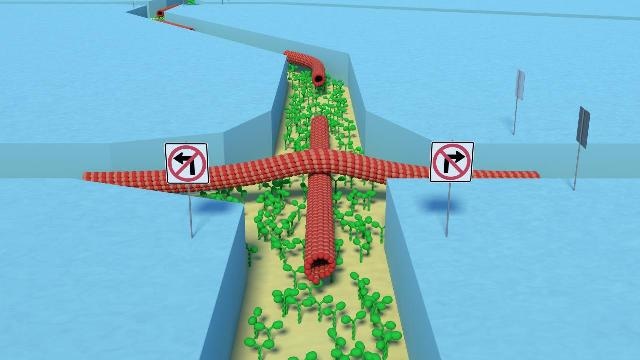Feb 29 2016
A study published this week in Proceedings of the National Academy of Sciences reports a new parallel-computing approach based on a combination of nanotechnology and biology that can solve combinatorial problems. The approach is scalable, error-tolerant, energy-efficient, and can be implemented with existing technologies. The pioneering achievement was developed by researchers from the Technische Universität Dresden and the Max Planck Institute of Molecular Cell Biology and Genetics, Dresden in collaboration with international partners from Canada, England, Sweden, the US, and the Netherlands.
 Microtubules crossing at pass junction.
Microtubules crossing at pass junction.
Conventional electronic computers have led to remarkable technological advances in the past decades, but their sequential nature –they process only one computational task at a time– prevents them from solving problems of combinatorial nature such as protein design and folding, and optimal network routing. This is because the number of calculations required to solve such problems grows exponentially with the size of the problem, rendering them intractable with sequential computing. Parallel computing approaches can in principle tackle such problems, but the approaches developed so far have suffered from drawbacks that have made up-scaling and practical implementation very difficult. The recently reported parallel-computing approach aims to address these issues by combining well established nanofabrication technology with molecular motors which are highly energy efficient and inherently work in parallel.
In this approach, which the researchers demonstrate on a benchmark combinatorial problem that is notoriously hard to solve with sequential computers, the problem to be solved is ‘encoded’ into a network of nanoscale channels (Fig. 1a). This is done, on the one hand by mathematically designing a geometrical network that is capable of representing the problem, and on the other hand by fabricating a physical network based on this design using so-called lithography, a standard chip-manufacturing technique.
The network is then explored in parallel by many protein filaments (here actin filaments or microtubules) that are self-propelled by a molecular layer of motor proteins (here myosin or kinesin) covering the bottom of the channels (Fig. 3a). The design of the network using different types of junctions automatically guides the filaments to the correct solutions to the problem (Fig. 1b). This is realized by different types of junctions, causing the filaments to behave in two different ways. As the filaments are rather rigid structures, turning to the left or right is only possible for certain angles of the crossing channels. By defining these options (‘split junctions’ Fig. 2a + 3b and ‘pass junctions’, Fig. 2b + 3c) the scientists achieved an ‘intelligent’ network giving the filaments the opportunity either to cross only straight or to decide between two possible channels with a 50/50 probability.
The time to solve combinatorial problems of size N using this parallel-computing approach scales approximately as N2, which is a dramatic improvement over the exponential (2N) time scales required by conventional, sequential computers. Importantly, the approach is fully scalable with existing technologies and uses orders of magnitude less energy than conventional computers, thus circumventing the heating issues that are currently limiting the performance of conventional computing.
Source: https://cfaed.tu-dresden.de/